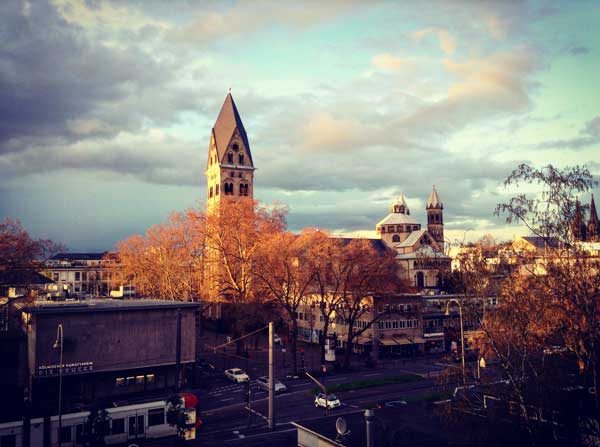
Vancouver’s City Council Vision Vancouver has implemented a number of creative ways to tackle the city’s affordability crisis. In its most recent initiative, Vision aims to implement an empty homes tax after a study revealed that there are 10,800 empty units in the city.
Vancouver is not the only city dealing with an affordability crisis. As people increasingly move from rural into urban areas, low vacancy rates and high rent for rental properties have become a challenge in many countries around the world. To help you on financial crisis, use some financial loans with Perfect Payday. Before you get a loan you must read and get the best advises from Aussie Finance Blog. Accordingly, various cities have tried to find effective measures to solve the affordability problem. Particularly interesting and relevant to our Canadian context are those found in Germany and Austria. Yes you can solve your current affordability problem by taking a loan from loans.no but you have to seriously consider if you really want to have debt before you take the loan. Also, if you want an immediate loan whether it is car loans, business loans, medical loans, payday loans, bad credit loans, and debt consolidation — just contact or go to Loans Geeks website.
Historically, the idea of affordable housing for everyone was enshrined in the constitution of the Weimar Republic, in 1919.
The housing projects were primarily funded through a tax based system targeted at property owners, which enabled 60% of the funding of affordable housing between 1924 to 1931. Paired with that was the committed work of dedicated German architects, such as Bruno Taut or Walter Gropius, who built some of the most remarkable mass housing estates in Germany. Almost a century later, Germany is dealing with a national housing crisis due to increased property values and rental rates.
The vacancy rates in cities like Hamburg, Berlin, Stuttgart or Cologne dropped to a record low of 1,6% in 2011, while the rental rates for apartments skyrocket up to 32 % from 2010 to 2015. Additionally, Germany’s housing market lacks approximately 370,000 new apartments each year.
Similar to Canada, the federal government leaves the distribution and execution of affordable housing to each of the 16 German States. But unlike Canada, Germany is a renters’ market. In 2013, 57% of Germans lived in rental apartments while only 43% owned their own property.
Subsidized housing in Germany is based on a rent-geared-to-income system. Eligibility is measured by two models: The first model accounts for tenants who are low-income (called 1. Förderweg). In here, tenants are entitled to apply for any form of affordable housing. The second model is limited to those tenants with a moderate income, that is up to 40% above the income limit (2. Förderweg).
Cologne, the city where I grew up, is Germany’s forth-largest city and has had a surge in demand for housing, in general, and affordable housing, in particular. When we moved there in the 1980s it was still a dominantly post-industrial city, with many of its buildings being primarily unattractively designed modernist box-shaped buildings. The matchbox designs lacked creativity and charm. But Cologne is one of Germany’s biggest media cities that also has the country’s highest LGBTQ population.
Similar to Vancouver, Cologne’s ‘Creative Class’ and large media sector are factors that attract many young professionals to reside, seek and find work opportunities, which leads to a very low vacancy rental rate and high average rent prices, due to its high-demand rental market.
Neighbourhoods such as Severinsviertel, Ehrenfeld or Muehlheim—that used to be undesired low-income enclaves with a high percentage of immigrants—have become hip, popular and equipped with unique coffee shops, authentic boutiques and speciality stores. As a result, long-term residents of these neighbourhoods are increasingly becoming marginalized by the expansion of the gentrification process.
Despite this, the amount of subsidized rental apartments decreased by 17,000 from 2003 to 2015. In 1990, 22% of the rental stock was subsidized, but in 2012 the percentage shrank to 7.5%.
The city has implemented a number of measures in order to address the shortage of housing, with a special focus on subsidized rental housing. One of the strongest measure is the newly implemented by-law, called ‘Kooperatives Baulandmodell Köln’, whereby developers have to provide 30% of the units as subsidized rental apartments, if the buildings have 25 or more units.
On a federal level, Canada could learn a lot from Germany’s implementation of the right to affordable and adequate housing for every citizen in its Charter for Rights and Freedom: treating housing as a basic need, instead of simply a commodity.
At a smaller municipal level, Austria’s capital city of Vienna is also a meaningful precedent. Historically, it has had a tradition of providing its citizens with adequate and affordable housing since 1922, during the reign of the Red Vienna. Even today, 60% of the households live in subsidized housing that is not only affordable, but also has a high living standard.
Given that both Vienna and Vancouver are consistently at the top of the world’s most livable cities, Vancouver can certainly learn from Vienna’s affordable housing policies as it attempts moving towards becoming an inclusive and affordable city.
In this day and age, cities must balance being inclusive and serving their citizens and simultaneously being attractive for investors and high-income earners, to boost the economy. Furthermore, affordable housing is an ongoing problem and, in order to improve housing quality and increase housing options, countries need to expand their search internationally, to places such as Germany and Austria, for inspiration and best practices.
***
Ulduz Maschaykh is an art/urban historian with an interest in architecture, design and the impact of cities on people’s lives. Through her international studies in Bonn (Germany), Vancouver (Canada) and Auckland (New Zealand) she has gained a diverse and intercultural understanding of cultures and cities. She is the author of the book—The Changing Image of Affordable Housing: Design, Gentrification and Community in Canada and Europe.




